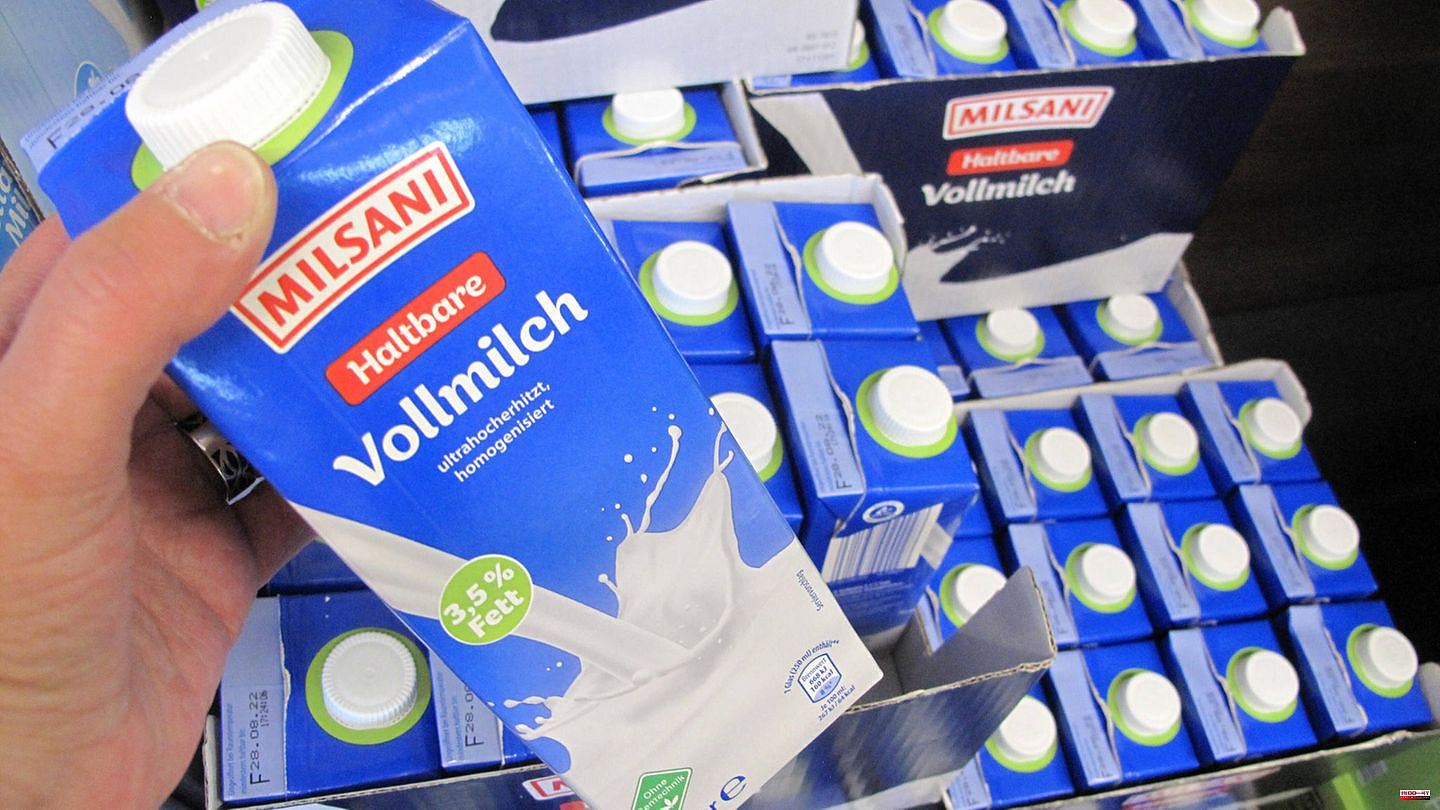Supermarket shopping has become significantly more expensive in recent months. Along with energy, food was the main driver of inflation. Grocery retailers are now around the corner with good news for consumers: milk and dairy products are becoming cheaper.
Discounter Aldi will lower the prices for more than 50 dairy products from today's Wednesday - "permanently", as it says in a statement. Among other things, a liter of fresh whole milk now only costs 99 cents instead of the previous 1.15 euros. The same applies to UHT milk. Quark or condensed milk are also becoming cheaper. As of today, competitor Kaufland is even offering 350 dairy products more cheaply, here too a liter of whole milk costs 99 cents and a pack of quark 85 cents. It is expected that other discounters and supermarkets will follow suit.
The liter of milk is what trade experts call a "price point". This means that it is particularly in the focus of consumers because it is bought a lot and often. Those who offer milk cheaply are generally perceived as cheap. In the current phase of inflation, in which many customers are keeping a close eye on money, this is particularly important to food retailers.
Accordingly, the discounters are also aggressively communicating the current price reduction. In a statement on milk reduction, Aldi praises itself as a "reliable basic supplier" and "price leader". Kaufland explains that since raw material prices have recently fallen, it is part of "passing on price advantages directly to customers". The price reduction is possible because the major grocers recently renegotiated the conditions with the milk producers. According to "Lebensmittel Zeitung", new conditions have been in effect since June 1st.
Are groceries becoming cheaper again in general? Economists hope that inflation has passed its peak: According to provisional figures from the Federal Statistical Office, the inflation rate in May was 6.1 percent more than in May 2022. Compared to April, consumer prices in May even fell slightly. This was mainly due to lower energy prices. In the case of food, the price pressure has eased at least somewhat this year. For example, food prices rose by more than 20 percent from October to March compared to the same month last year; according to preliminary information, it was only 14.9 percent in May. But that also means: In May, groceries were still almost 15 percent more expensive than a year earlier.
In general, there is hope that food prices will continue to decline. For example, producer prices across the EU have risen surprisingly little recently, which is considered an early indicator of a lower increase in consumer prices. The easing in producer prices will "gradually become visible in the food sales prices," said Franz-Martin Rausch, general manager of the Food Trade Association (BVLH) to the newspapers of the Bayern media group. In some areas, the price reductions are already visible.
However, it is questionable whether milk in particular will remain so cheap in the long term. According to "Lebensmittel Zeitung", the dairy industry expects prices to rise again in the second half of the year. In general, fresh food in particular is always subject to seasonal fluctuations, regardless of general developments such as energy prices. The comforting message for consumers is that food could go up and down again in the future instead of just up.







